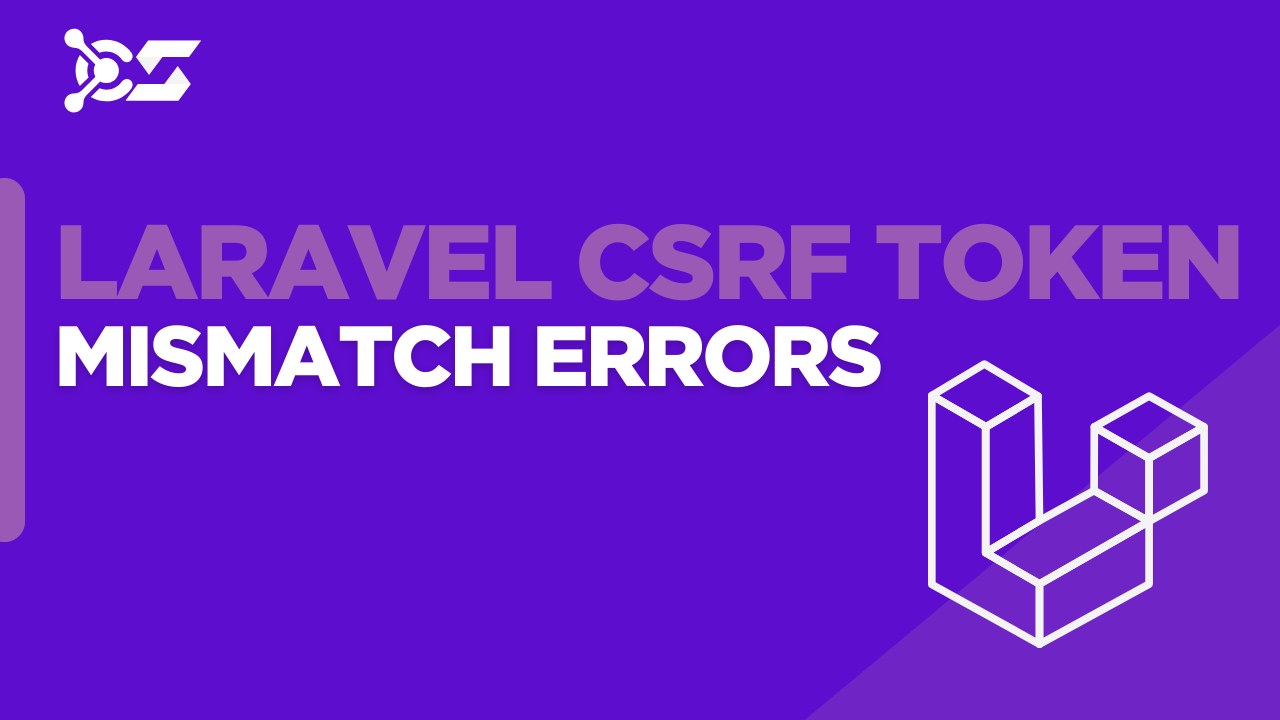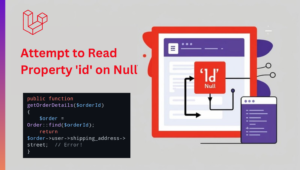When developing web applications with Laravel, one common issue developers encounter is the CSRF token mismatch error. This error typically occurs during form submissions, AJAX requests, or API calls, resulting in a 419 Page Expired response. In this tutorial, we’ll explore the causes of the CSRF token mismatch error in Laravel, provide step-by-step solutions, and share best practices to prevent it. By the end, you’ll have a clear understanding of how to resolve this issue and enhance your Laravel application’s security.
This guide is designed for beginner and intermediate Laravel developers, but even seasoned developers can benefit from the advanced troubleshooting tips included.
What is a CSRF Token Mismatch Error in Laravel?
CSRF (Cross-Site Request Forgery) is a security vulnerability where an attacker tricks a user into performing unintended actions on a web application. Laravel mitigates this by including a CSRF token in forms and verifying it during POST, PUT, PATCH, or DELETE requests. A CSRF token mismatch error occurs when the token sent with a request doesn’t match the one expected by the server.
Common Causes of CSRF Token Mismatch
- Session Expiration: The user’s session has expired, invalidating the CSRF token.
- Incorrect Token Handling: The CSRF token is missing or incorrectly included in forms or AJAX requests.
- Caching Issues: Page caching interferes with token generation or validation.
- Cross-Origin Requests: AJAX requests from a different domain lack proper token setup.
- Misconfigured Middleware: Laravel’s
VerifyCsrfTokenmiddleware is not properly configured.
Understanding these causes is the first step to resolving the issue. Let’s dive into the solutions.
Step-by-Step Solutions to Fix CSRF Token Mismatch in Laravel
Below are practical steps to diagnose and resolve the CSRF token mismatch error, organized for clarity and ease of implementation.
1. Verify CSRF Token in Forms
Laravel automatically generates a CSRF token for each user session. Ensure your forms include the @csrf directive or the csrf_field() helper.
Example: Adding CSRF Token to a Form
<form method="POST" action="/submit">
@csrf
<input type="text" name="name" placeholder="Enter your name">
<button type="submit">Submit</button>
</form>Explanation:
- The
@csrfdirective generates a hidden input field containing the CSRF token. - Ensure every POST form includes this directive to avoid mismatch errors.
Pro Tip: If you’re using Blade templates, always use @csrf instead of manually generating tokens to reduce errors.
2. Handle CSRF Tokens in AJAX Requests
For AJAX requests (e.g., using jQuery, Axios, or Fetch), you need to include the CSRF token in the request headers or data. Laravel provides a meta tag in the <head> section for this purpose.
Step 1: Add CSRF Meta Tag
<head>
<meta name="csrf-token" content="{{ csrf_token() }}">
</head>Step 2: Configure AJAX Request
Using Axios (commonly included with Laravel):
axios.post(‘/submit’, { name: ‘John Doe’ }).then(response => { console.log(response.data); }).catch(error => { console.error(‘Error:’, error); });
Explanation:
- Laravel’s default JavaScript setup (via
bootstrap.js) automatically includes the CSRF token in Axios requests. - For jQuery, manually set the
X-CSRF-TOKENheader using the meta tag’s value.
Common Issue: If the meta tag is missing or the token is not sent, you’ll get a mismatch error. Always verify the token is present in the request headers using browser developer tools.
3. Check Session Configuration
CSRF tokens are tied to user sessions. If the session expires or is misconfigured, the token becomes invalid.
Steps to Fix:
- Verify Session Driver: Ensure the
SESSION_DRIVERin your.envfile is set correctly (e.g.,file,database, orredis). - Check Session Lifetime: In
config/session.php, adjust thelifetimevalue to prevent premature session expiration. - Clear Session Files: If using the
filedriver, clear old session files:
php artisan cache:clear
rm -rf storage/framework/sessions/*Pro Tip: For high-traffic applications, consider using a database or redis session driver for better reliability. Learn more about optimizing Laravel applications at Codimate Solutions’ Services.
4. Disable CSRF for Specific Routes (Use Sparingly)
In some cases, such as public APIs or specific routes, you may want to bypass CSRF protection. Modify the VerifyCsrfToken middleware to exclude certain routes.
Example: Exclude Routes
<?php
namespace App\Http\Middleware;
use Illuminate\Foundation\Http\Middleware\VerifyCsrfToken as Middleware;
class VerifyCsrfToken extends Middleware
{
protected $except = [
'api/*',
'webhook/*',
];
}Warning: Disabling CSRF protection increases security risks. Only use this for routes that don’t handle sensitive data or are protected by other means (e.g., API tokens).
5. Address Caching Issues
Caching can interfere with CSRF token generation, especially if pages are cached with stale tokens.
Steps to Fix:
- Disable Page Caching for Forms: Ensure your form pages are not cached by adding the
no-cacheheader:
return view('form')->header('Cache-Control', 'no-cache, no-store, must-revalidate');- Clear Application Cache:
php artisan cache:clear
php artisan config:cachePro Tip: Use Laravel’s caching best practices to avoid conflicts. For advanced web development strategies, check out Codimate Solutions’ Web Development Services.
6. Debug and Log Errors
If the issue persists, enable debugging to identify the root cause.
Steps:
- Set
APP_DEBUG=truein your.envfile to view detailed error messages. - Log CSRF token validation failures by customizing the
VerifyCsrfTokenmiddleware:
protected function handle($request, Closure $next)
{
try {
return parent::handle($request, $next);
} catch (TokenMismatchException $e) {
\Log::error('CSRF Token Mismatch: ' . $request->path());
return redirect()->back()->withErrors(['token' => 'CSRF token mismatch.']);
}
}Pro Tip: Use Laravel’s logging to monitor recurring issues and improve application reliability.
Best Practices to Prevent CSRF Token Mismatch
To minimize the chances of encountering CSRF token mismatch errors, follow these best practices:
- Use Laravel’s Built-in Tools: Always use
@csrforcsrf_field()in forms and the CSRF meta tag for AJAX. - Optimize Session Management: Configure session settings based on your application’s needs and traffic.
- Test Across Browsers: CSRF issues may vary by browser due to cookie or caching behavior. Test thoroughly.
- Secure APIs Properly: For APIs, use API tokens or OAuth instead of disabling CSRF protection.
- Stay Updated: Keep Laravel and its dependencies updated to benefit from security patches.
For more insights on secure web development, explore Codimate Solutions’ Blog on Web Development.
FAQ: Common Questions About Laravel CSRF Token Mismatch
Conclusion
The Laravel CSRF token mismatch error can be frustrating, but it’s manageable with the right approach. By ensuring proper token inclusion in forms and AJAX requests, optimizing session management, and following security best practices, you can resolve this issue and enhance your application’s reliability. For more advanced Laravel development techniques or professional assistance, visit Codimate Solutions’ Contact Page to connect with expert developers.




